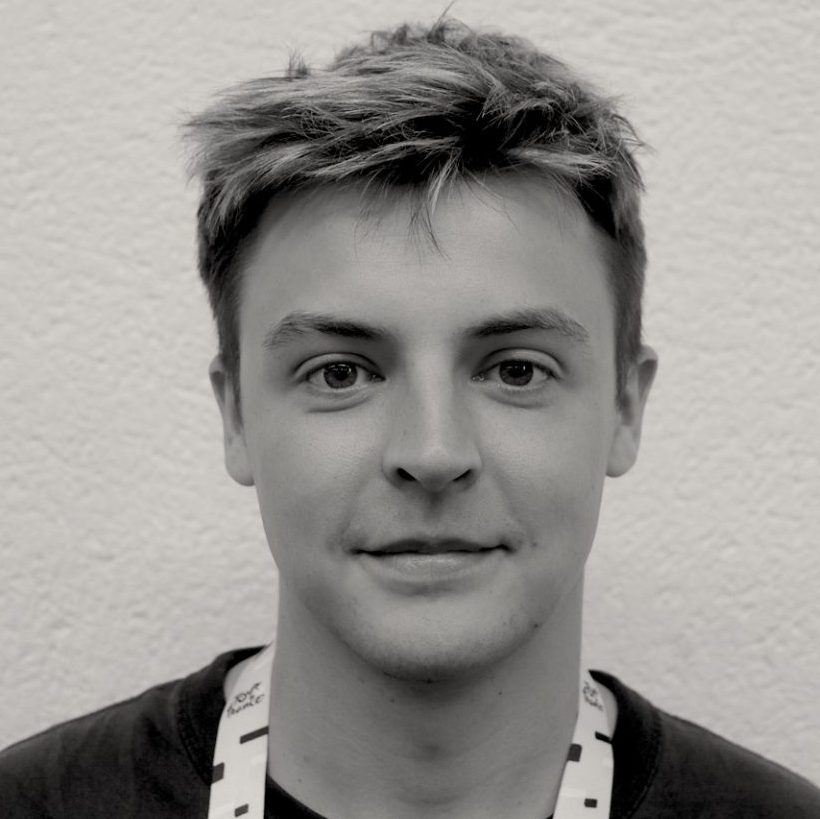Here it is, the day in late October expertly timed at the death of the current cycling season when the Tour de France gets you dreaming all over again of what is to come next year.
Gathered in Paris as always, the Tour organisers slowly unveiled the routes of both the men’s and women’s races to invited guests, media and riders.
In a ceremony over two hours long filled mainly with montages, we then finally got a peak at all those delectable stage profiles and maps. You’ve got to make it worth the trip for those in attendance, although last year’s men’s podium of Tadej Pogačar, Remco Evenepoel and Jonas Vingegaard were not in the room, enjoying some well-earned rest, except for Vingegaard who is already training to try and overcome his Slovenian nemesis next July.
The headlines for the men: A first-week double ascent of the Mûr-de-Bretagne, a Tuesday rest day (!), three heavy Pyrenean days with summit finishes at Hautacam and Luchon-Superbagneres sandwiching a mountain time trial up Peyragudes, a Mont Ventoux summit finish, and then a Col de la Loze queen stage before the GC race ends with a summit finish at La Plagne.
The headlines for the women: An organised south-easterly jaunt from Brittany to the Alps, with two punchy stages opening the action before two sprint days take us to the hills of the Massif Central. We then finish with three days of fireworks in the Alps: the Col du Granier, Col de Madeleine and Col de Joux Plane are all included. Enjoy.
Now for the deeper dive.

Tour de France Hommes 2025 route
“300 applications every year,” Tour boss Christian Prudhomme said of the number of towns and cities who applied to host stage starts and finishes ahead of the route’s unveiling, a list whittled down by sieving through locations that will happily pay for the privilege, make logistical sense to the route as a whole and hopefully provide optimum conditions for an entertaining race.
Both men’s and women’s races are entirely contained within France this year, having enjoyed various foreign Grand Départs, and a specific tonic ordered for the exuberance of last year’s Florence opening with a start in Lille for 2025.
“We have french fries, we have beer, and we know how to party,” an official from the Nord département promised us, almost aware that Copenhagen, Bilbao and Florence are tough acts to follow. There’s also a fantastic duck restaurant in Lille, but I’ll be keeping it to myself for the time-being until we sort our reservation out.

Stage 1 in Lille should see a sprinter pull on the yellow jersey for the first time in half a decade, before we trade 2024’s stage 2 finish of Bologna for Boulogne-sur-Mer, a punchy uphill finish with three climbs in the last 10 km along the coast, like ASO turned to ChatGPT for the ingredients to what makes for an animated bike race finale.
Stage 3 up to Dunkirk could also be windy (no point checking the forecasts just yet, we’re nine months out) but should suit the sprinters, stage 4 begins our transfer across to Brittany with a punchy Rouen finish, and then stage 5 is a flat time trial in Caen. This is the day to get all of your work done so you can slack off the rest of the week.
Get ready for overwrought English history references on stage 6 as we begin in the tapestry town of Bayeux, with 3,500 metres of elevation and an uphill finish, which sets the scene for a similar menu on Friday as the peloton tackles the Mûr-de-Bretagne twice, the second ascent being the finish line. With Mathieu van der Poel hinting he could miss the Tour next summer, the venue where he won in 2021 could be enough to tempt him back once again.
Into the first weekend, and the route dictates long transfer days down from the north-west into the belly button of France, a couple of flat stages that are in no way designed for the bumper weekend TV audiences but (at this juncture shrug your shoulders in a very French way) what can you do? Expect the media to promise crosswinds that don’t materialise, and tweets pondering why 400 km of flat bike racing isn’t the most enthralling sporting contest they’ve ever laid eyes on.
An interesting wrinkle added to this edition is because Bastille Day falls on a Monday we continue racing, with 4,400 metres of climbing as we head into the Massif Central and a finish up the Puy de Sancy, where Pogačar could make a break for it having likely grown restless after moseying around the flatter side of France for a week and a half.
Then a Tuesday rest day in Toulouse, how novel! We remain in the city for a sprint day on stage 11 and then it’s into the Pyrenees for a backloaded Tour GC slog-athon.
Stage 12: summit finish to Hautacam via the Col du Soulor and Col des Borderes. 3,850 metres of elevation gain and the scene where in 2023 Vingegaard effectively sealed his second yellow jersey.

Stage 13: mountain time trial up to Peyragudes. Get ready for James Bond references with the altiport from Tomorrow Never Dies, social media managers will be falling over their dexterous thumbs to acquire those sweet, sweet numbies to show to their boss, who can’t stop clicking adverts he really shouldn’t be clicking. It’s an 11 km TT, nearly all uphill, about as exciting as it’s possible to design a time trial. Well done, course designer Thierry Gouvenou.
That’s two consecutive tough days in the books, so how about a third? 4,950 m of elevation across the Tourmalet, Aspin, Peyresourde and a summit finish at Luchon-Superbagneres, which has waited 36 years since the last time it was on the route.
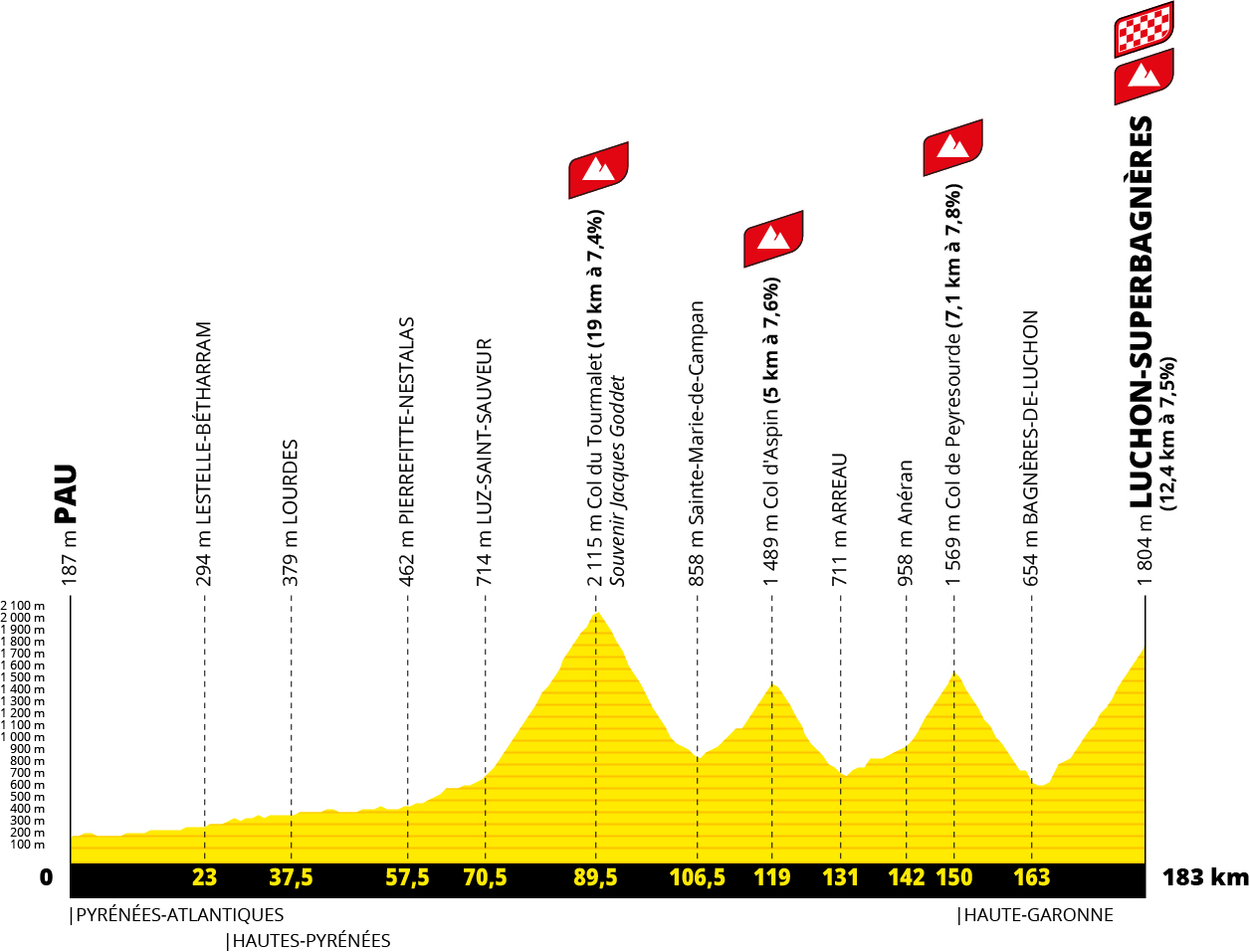
We’ll finish with a Sunday sprint day to Carcassonne, and a steaming hot Cassoulet for dinner despite it being 37°C outside. It’s just the way things are done. A second rest day in Montpelier on the usual Monday, meaning a reduced but heavy second week, before we head into the Alps for the second half of the GC fight. But first …
We begin the final week with a stage 16 summit finish atop Mont Ventoux for the first time in 11 years. Not bad, ASO, not bad at all. You know how to keep us coming back for more.
Stage 17 is then a transitional sprint day up to Valence to get us within striking distance of the Alps, before a Thursday jaunt over the Col du Glandon and Col de la Madeleine and up to the Col de la Loze. This is your queen stage. Drink it in.
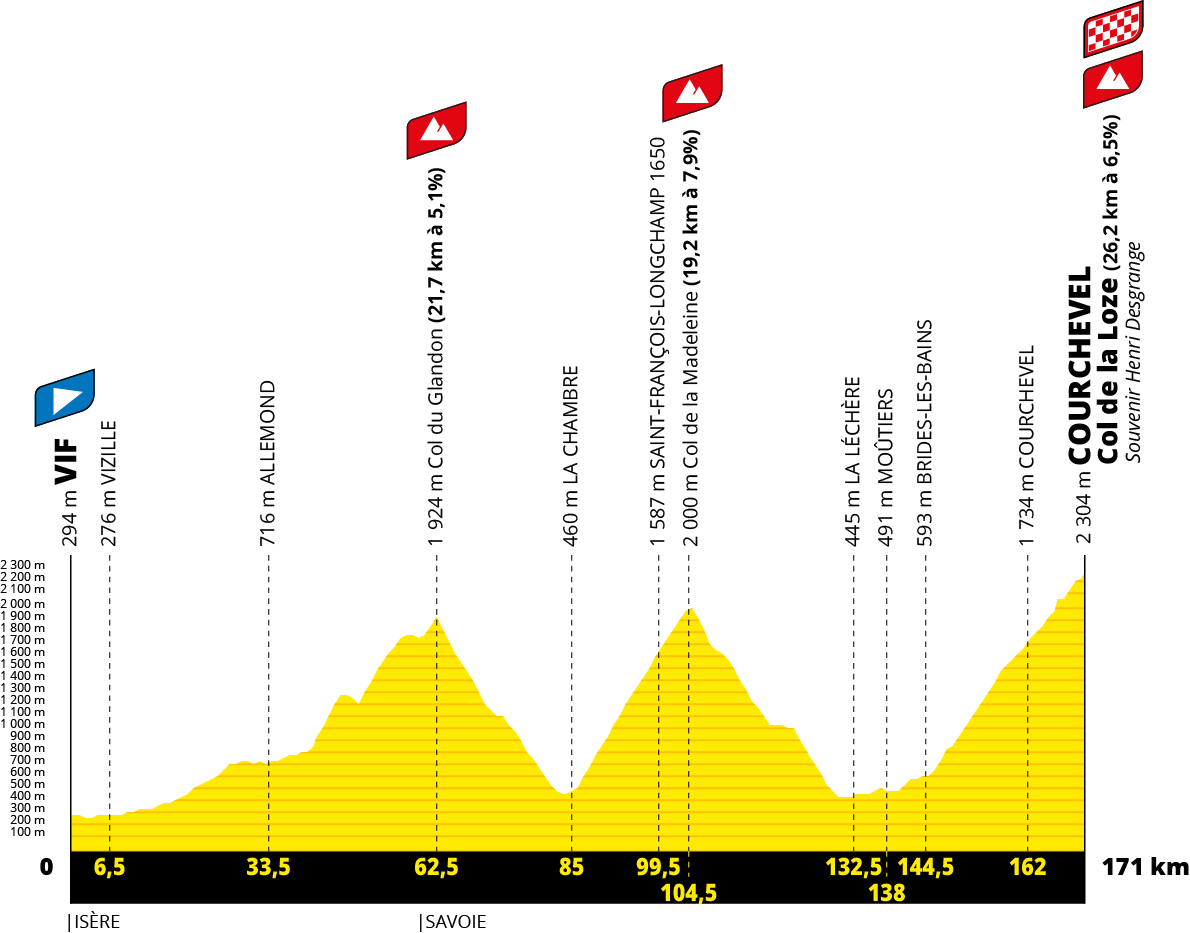
Stage 19 then provides us a second consecutive day finishing above 2,000 metres as the race heads over the Col de Saisies, Col de Pre, and Cormet de Roseland before another summit finish at the ski resort of La Plagne, which should see the last of any GC action should the race not already be sewn up by now.
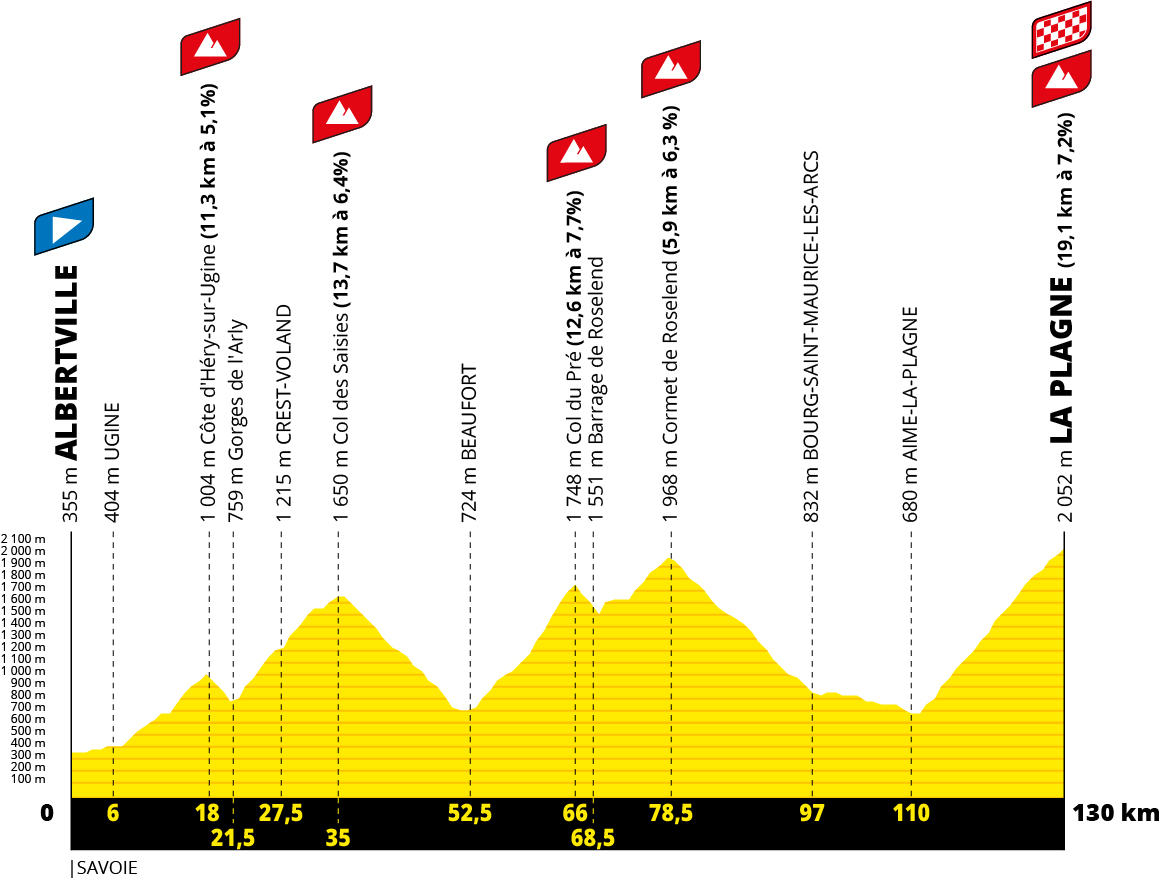
Stage 20 is tucked in as a warm-up for the sprinters as we make our journey back north (Christophe Laporte will likely win from a breakaway) and then Paris is back after a year off for the sprinters world championships on the Champs-Élysées. Très bein.
Tour de France Femmes avec Zwift 2025 route
Billed as ‘The Diagonal of the Queens’ by ASO, as the peloton make their way south-east from Brittany down to the Alps, the French translation of which is the title of a novel where two female protagonists hold opposing visions of the world (according to the Amazon blurb) with one believing in the strength of the group and the other in individualism. what better way to set up 2023 champion Demi Vollering as she returns racing for a French team to try and play spoiler to her old home SD Worx-Protime and a returning Anna van der Breggen?
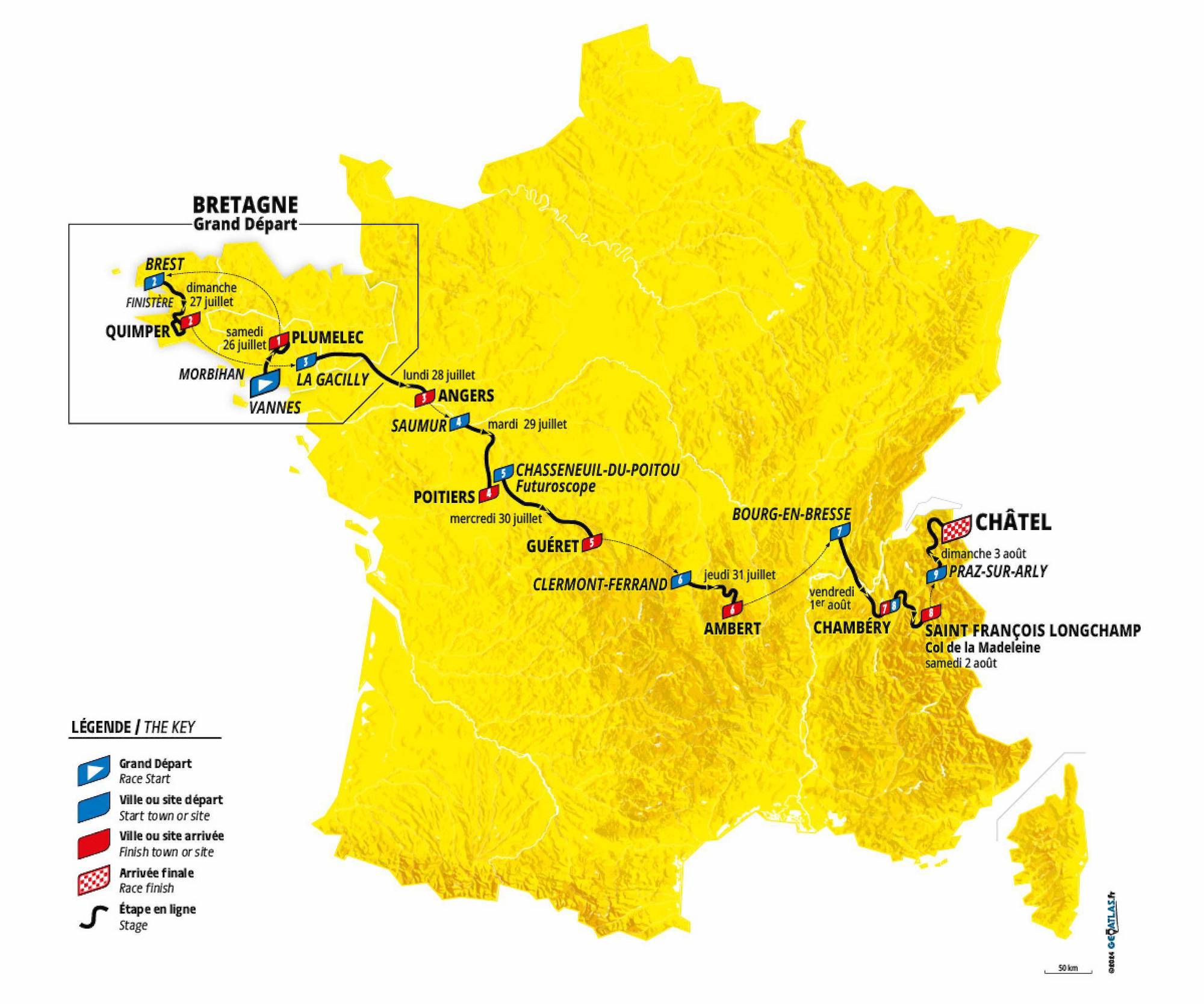
Nine stages, 17,240 metres of altitude gain over a total of 1,165 kilometres, and a pretty even mix of flat, lumpy, medium and high mountain stages.
Stage 1 , beginning the day the men arrive in Paris, is for the puncheurs with a finishing circuit on the Côte de Cadoudal in Plumelec, and stage 2’s Brest to Quimper route will suit a similar style of rider. The sprinters have to wait until the stage 3 finish line in Angers for their shot as the race closes out the Brittany Grand Départ.
Again, styles of stages arrive in pairs as stage 4 heads southeast (as does nearly all of the race) from Saumur to Poitiers.
The slow build now ratchets up with a hillier offering on stage 5 that should crescendo with the final ascent arriving 7 kilometres from the finish line.
Stage 6 returns to our old friend Clermont-Ferrand, mostly because where else would you want to be when you’re right in the middle of the country, as the peloton tackles 2,350 metres of elevation in the Massif Central as we should finally see the GC riders come to the fore if they’ve kept themselves well-hidden so far this race.
Stage 7 sees us leave the chicken town of Bourg-en-Bresse and enter the Alps with a tough climb over the Col du Granier before a downhill finish into Chambery, preparing us for our first summit finish of the race the next day at Saint François Longchamp on the Col de Madeleine at 2,000 metres after a total of 3,490 metres of elevation on the stage. Blimey.

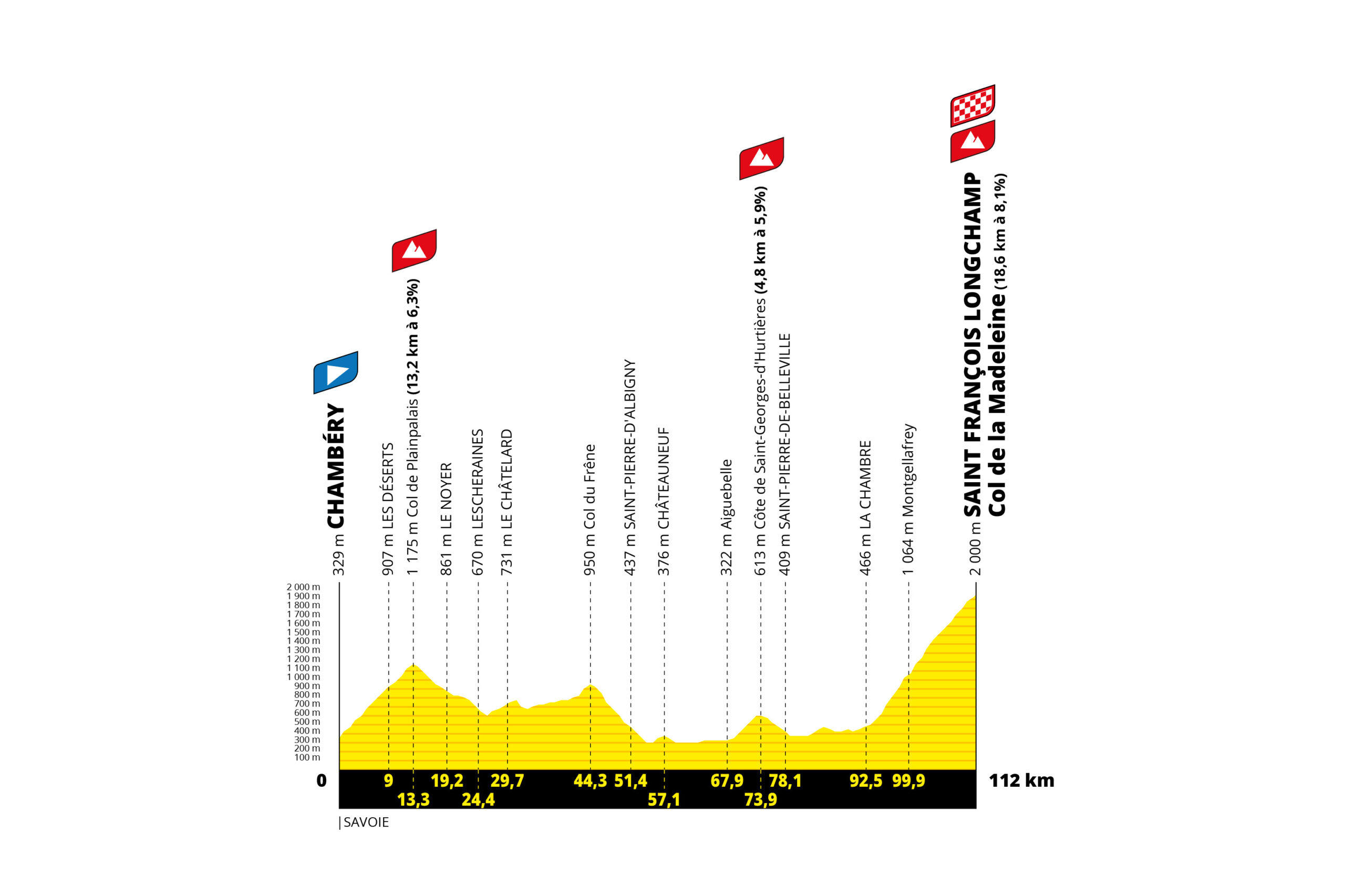
For the final act on stage 9, the GC fight will go over the Col de Joux Plane before the Col de Corbier and then a steady, gradual climb to Châtel.

Did we do a good job with this story?


